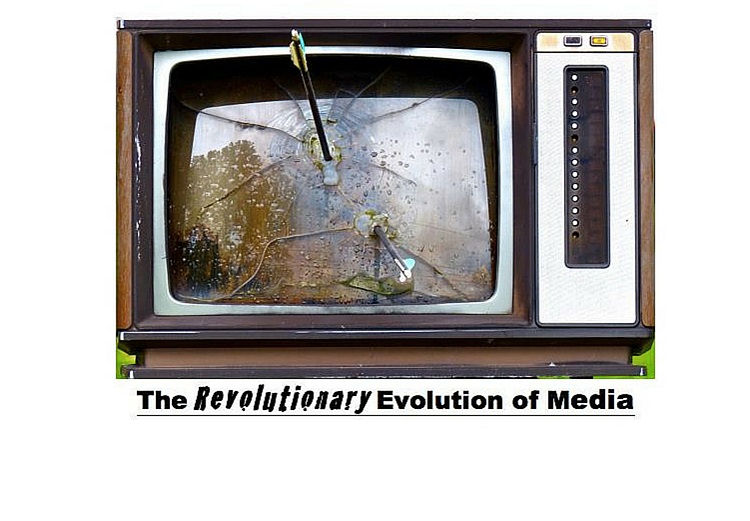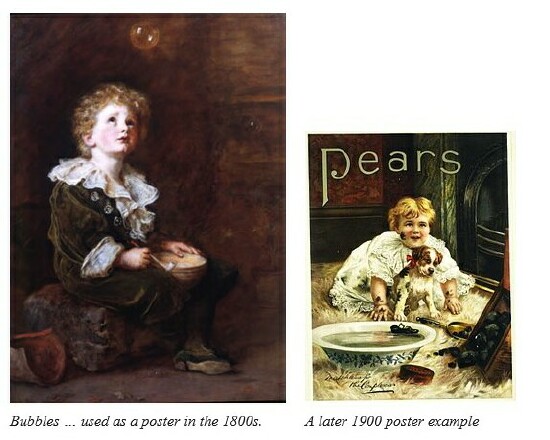TREotM: The History of Media Revenue Models Continued

Chapter 14, Part 3
"The Revolutionary Evolution of the Media" is a work in progress. Go here to read it from the beginning.
Or, from whence cometh advertising?
From a long, long time ago; as far back as 4,000-year-old rock art that pointed to a shop. In fact, you can still find some almost everywhere, even some modern manifestations in Asia, particularly in smaller town rural China. With paper and ink, hand-written calligraphic signs were individually created and, sometimes, handed out to passersby.
In the 11th to 7th centuries BC in China, flutes were employed to help market candy. Pre-literacy, singers and lecturers appeared on behalf of governments and religions … state-sponsored advertising, so to speak.
Pre-literacy throughout the Dark Ages, craftsmen and shopkeepers used signs with drawings of things that signified their products for sale. For example, a boot for a cobbler, clothing for a tailor and a horseshoe for a blacksmith.
A copper printing plate dating from the Song dynasty (10th-13th centuries) was used to print posters in the form of a square sheet of paper with a rabbit logo. Written above and below the rabbit were the words "Jinan Liu's Fine Needle Shop" and "We buy high quality steel rods and make fine quality needles, to be ready for use at home in no time." That rabbit, with words, is considered the world's earliest identified printed advertising medium.
In the 13th century – just before the dawn of a growing literacy – a Parisian poet named Guillaume de la Villeneuve gathered the cries of street callers who announced the whereabouts of produce and other product sellers from carts and wagons into a compilation called “Les Crieries de Paris.” An English version talked about cockles and mussels … alive, alive oh!
With growing literacy and the advent of the printing press, advertisements in early newspapers were mainly for books and medicines. Early packaged medicines were created for newly modern-thinking urban who turned their backs on traditional cures. That was the upside. The downside turned out to be advertising by quacks producing fake cures.
Growing urbanization coupled with growing literacy and the advent of mass manufacturing all combined to ignite a spectacular growth in print advertising, especially in Western Europe and United States. It took a while, but industrialization, along with advertising, began gaining momentum later in Russia, Asia and, even a little later, a confused and restless Latin America as it began gaining independence.
England’s Industrial Revolution, as chronicled by Paul Johnson in “The Birth of the Modern,” helped spark the shift to a shrinking globe as isolated places gave way to a more intertwined world. Not surprisingly, advertising and media followed suit. After Andrew Jackson defeated the British in New Orleans and then began two “wars” (one dedicated to eradicating native populations west of the Mississippi and the other to seize Florida from the Spanish), Britain decided the best way to protect it territories in Canada and the Caribbean was to make nice with the United States. Oddly, that helped create a giant English-speaking marketplace for advertising as the “special relationship” between the two countries developed. First in London and soon thereafter in America’s larger and growing cities, posters began appearing plastered to any flat surface … the original OOH (out-of-home) advertising that’s now predominantly billboards.
Among the first of the posters appearing in both countries in the early 1800s was one based on a painting called Bubbles by John Everett Millais … Thomas James Barrett used the painting for Pears soap by putting a soap in the foreground of the painting (something Millais hated, but he’d sold the copyright, too).

Barrett pioneered the idea of branding … in a 1908 book – Modern Business – by T F G Coates, he was dubbed “the father of modern advertising.”
To be continued …
The opinions and points of view expressed in this commentary are exclusively the views of the author and do not necessarily represent the views of MediaVillage/MyersBizNet management or associated bloggers.


